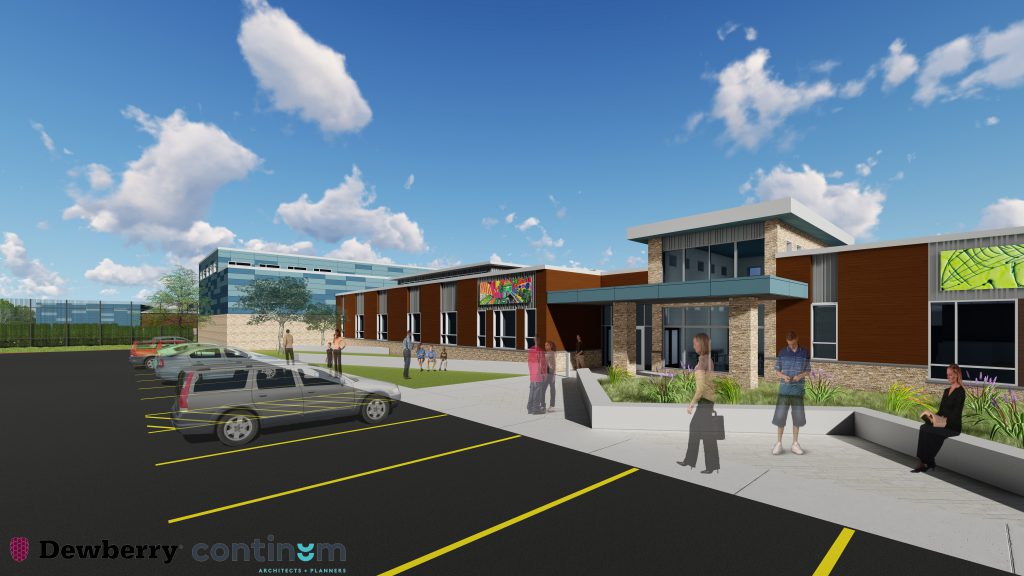State Youth Corrections Failures Hit Home
County detention center overcrowded. Judges have few options. Less money for prevention.
It’s going on four years since policy makers at various levels of government tried to reform Wisconsin’s juvenile justice system, but very little has changed, and this failure is causing reverberations in the system and a shortage of beds at Milwaukee’s youth jail.
County officials are reporting that the Vel R. Phillips Juvenile Justice Center has regularly run out of beds for the youth incarcerated there due to overcrowding in recent months.
What looked like warning indicators late last year is beginning to become a crisis as the county struggles with overcrowding and its health and human services budget is blown apart by an increasing number of Milwaukee County youth being sent to state-run juvenile prisons.
In a recent report to the Milwaukee County Board, county officials reported that at one point in February the Vel R. Phillips facility had 141 youth detained there. The facility has less than 130 beds. “We’ve never had that capacity of youth in our center before,” said Kelly Pethke, interim-director DYFS.
“This obviously does impact our staff, impacts our youth and what we’re able to do for the youth while they’re in our care,” she told a meeting of the board’s Health, Equity, Human Needs and Strategic Planning Committee.
Pethke told supervisors that the young people have been sleeping on the ground in “boats.” The boat-like container holds a mattress, separating it from the floor. It also includes space for hygiene products and other personal items, according to DYFS.
Last week, the facility had 114 youth, said David Muhammad, deputy director of Department of Health and Human Services (DHHS). “Any time it gets below 120, we breathe a sigh of relief and know that there are no young people in the boats,” he said.
Contributing to the unprecedented number of youth that have been in the detention center in recent months is the average length of stay which, Pethke said, is higher than it’s ever been since she’s been with the department. On average, the youth are in the facility for approximately 60.3 days, she said. In 2021, the average length of stay was 36.4 days.
The reality, Pethke said, is that the facility is seeing more referrals than it has in the past. “The youth are coming in on serious charges,” she said. Muhammad said many children are facing charges related to “auto theft and gun violence and those types of things that we know have only been exacerbated because of the pandemic.”
The county is also seeing a rise in the number of Milwaukee County youths being committed to the state-run Lincoln Hills and Copper Lake facilities. As Urban Milwaukee previously reported, the latest biennial state budget increased the daily rate charged to counties to incarcerate their children.
It’s money that could be better spent elsewhere, said Shakita LaGrant-McClain, director of DHHS. “Imagine what that can do with our education system, imagine what that could do with community-based services, imagine what that can do and have an impact on the community as a whole as we think about the child, the youth, the family,” she lamented.
DHHS is now projecting a multi-million dollar budget deficit in 2022 because of these rising costs, according to a report by the county’s Office of Strategy, Budget and Performance. “That means that we’re gonna have to look at cutting those programs and services that are investing upstream in our community,” LaGrant-McClain said.
“I’m really concerned that all the work that we have done, and the credible messengers, youth employment, Bakari [Center];” she said, “like all of those things that we are trying to do to invest upstream will go away because we won’t have the funding to do it.”
“We have waiting lists for everything,” Muhammad said.
The county has been working to cut the number of youth sent to the state juvenile prisons to zero. The state prisons at Lincoln Hills and Copper Lake were the subject of an FBI investigation following allegations of abuse. During the past five years, the county has made progress, reducing the commitments to state prisons from well over 100 to, at times, fewer than 20 kids.
The county was supposed to build an SRCCCY. But the state slashed funding for Milwaukee, only offering approximately 30% of what the county estimated was needed to build a new facility. Without adequate or long term funding on the table, County Executive David Crowley deferred acceptance of the funds.
The Milwaukee County Accountability Program (MCAP), which is the county’s sentencing alternative to the state-run prisons, was to serve as the model for youth corrections at a new county facility. It’s currently capped at 24 youth and has a waiting list of 25, according to Pethke. It employs a combination of secure detention and community-based supervision.
“There are currently four kids who could be transferred to [state facilities], because of the waitlist for MCAP,” Pethke said.
The commitments to state facilities are rising despite the fact that some courts have interpreted state law to say that a judge cannot legally send a child to Lincoln Hills or Copper Lake, as they were supposed to be closed in 2021.
Chief Judge Mary E. Triggiano told Urban Milwaukee, “While there is no formal order telling judges what to do concerning [Lincoln Hills and Copper Lake] commitments and judges may interpret the law in a variety of ways, Act 185 appears to remove statutory authority for a judge to place a youth in a Department of Corrections juvenile correctional facility.”
There is, however, a workaround being used by the courts and the state Department of Corrections. A December 2021 memo from Ron Hermes, administrator of the state Division of Juvenile Corrections, notes that a motion can be filed for a “change of placement” that allows the courts to send children to the state-run facilities.
“As there are currently no operational SRCCCYs, it is the intent of the DOC to not object to a change in placement to a Type 1 juvenile correctional facility unless there are extraordinary circumstances,” Hermes wrote.
What’s happening to youth corrections at the county level – overcrowding and increasing commitments to state facilities – is largely the result of a massive policy failure at the state level.
The state still hasn’t closed the prisons it was, by law, supposed to have closed by now; it hasn’t built a new facility to replace them, as it was supposed to; and it underfunded the county facilities planned as alternatives to state-run institutions.
Political Contributions Tracker
Displaying political contributions between people mentioned in this story. Learn more.
MKE County
-
J.D. Vance Plays Up Working Class Roots, Populist Politics in RNC Speech
 Jul 17th, 2024 by Graham Kilmer
Jul 17th, 2024 by Graham Kilmer
-
Ron Johnson Says Free-Market Principles Could Fix Education
 Jul 17th, 2024 by Graham Kilmer
Jul 17th, 2024 by Graham Kilmer
-
RNC Will Cause Some County Services To Be Moved to Wauwatosa
 Jul 12th, 2024 by Graham Kilmer
Jul 12th, 2024 by Graham Kilmer























Closing the School For Boys in Waukesha County a few decades ago needs to go down as one of the bigger State Boondoggles in a class with Foxconn. How can families maintain regular contact with the inmates when they are a few hundred miles away? How can you have professional staff that reflects the racial makeup of the inmates in sparsely populated rural areas? Payouts for abuses have reached $25,000,000 and the powers to be still can’t be sure about a replacement.